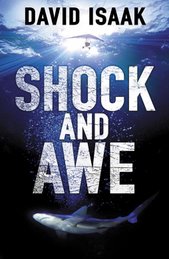Back to Part IV ... Forward to Part VI
Tip 4. In exposition, be shameless and have some irrelevant fun
Okay, I’m not screenwriting guru Robert McKee’s number-one fan, but he does have the occasional brilliant insight, and here’s one of them. McKee dislikes explanatory voice-over in film, and his dictum on this topic is:
Look carefully at any voice-over, and if it isn’t necessary to understanding the story, then leave it in.
Let me say that again with some big italics, as most people read it incorrectly the first time through:
Look carefully at any voice-over, and if it isn’t necessary to understanding the story, then leave it in.
Huh? Did you hear that right? Yes, you did. McKee’s point is that voice-over needed to explain the story is usually a fault, while voice-over that is not needed is an ornament. So if you don’t need it, go ahead and keep it. It’s probably not a patch on a faulty structure—it’s probably art.
Now, it’s wrong to map screenwriting to real writing on a one-to-one basis. Writing can go places cinema can never approach. But some exposition is for background and some exposition is for flow, and some exposition, by god, is just for fun.
In my own Switzerland paragraph I quoted earlier in this series of posts, the only point that directly advances the story is that Lorrie is talking to some naval architect. I could have placed the events in, say, Houston, or Inchon, Korea. I think the exposition adds interest to the story; I think it adds a degree of authority, making the narrative voice sounds as if it knows whereof it speaks. And, as it turned out, I found a way to get some story mileage out of the locale--even though it wasn't planned that way. But the truth is, a lot of that paragraph was just me goofing around.
The cool thing about this (if it worked) is that the reader is, I hope, entertained, and also has no idea which (if any) of the facts are relevant. At some level, this kind of exposition is no different from describing a sunset, or how someone jingles the change in their pocket. Is it really necessary? Maybe yes, maybe no. Which can be seen as a reason to take it out, but can also be a reason to leave it in.
The advantage of this plethora of I’m-telling-you-this-for-no-damn-reason factoids or descriptions is that you can easily toss in relevant facts, or thematic concerns, and even segue into dramatization, without being too obvious. Some of the things you list are just color, some are camouflage, some are vital, and some are sneaky ways of steering you to what comes next. The irony is that this is easiest to do when the bulk of the exposition is least relevant to the story.
And if you're a haphazard writer like me (who finds his story by stumbling through it), if your subconscious tosses up some odd fact or image, it's often a good idea to oblige by sticking it into the story. Once it's on the page, the subconscious will often proceed to do something elaborate with it down the road. (I don't suppose it's any secret, given the cover, that there is one or more sharks in Shock and Awe. But they were first introduced as a passing element, purely for atmosphere. Turns out they were important.)
Of course, there are limits to how much seemingly random detail you can stuff into a novel. But the real bottom line is simple: Is the reader engaged?
If the reader is engaged, only writers will quibble over whether it was too expository. And who cares what writers think? (Did you hear the one about the Hollywood starlet who was so dumb she tried to get ahead by sleeping with the writers?)
Back to Part IV... Forward to Part VI
Subscribe to:
Post Comments (Atom)



2 comments:
That's a useful post. A lot of food for thought. Kind of loosens the straitjacket a little too, doesn't it. And a good way of adding colour and depth to the landscape. Thanks.
Hi, Pundy. The freedom almost makes your head swim, doesn't it? Or it makes mine swim, anyhow. (Or maybe I shouldn't drink so early in the morning.)
Post a Comment